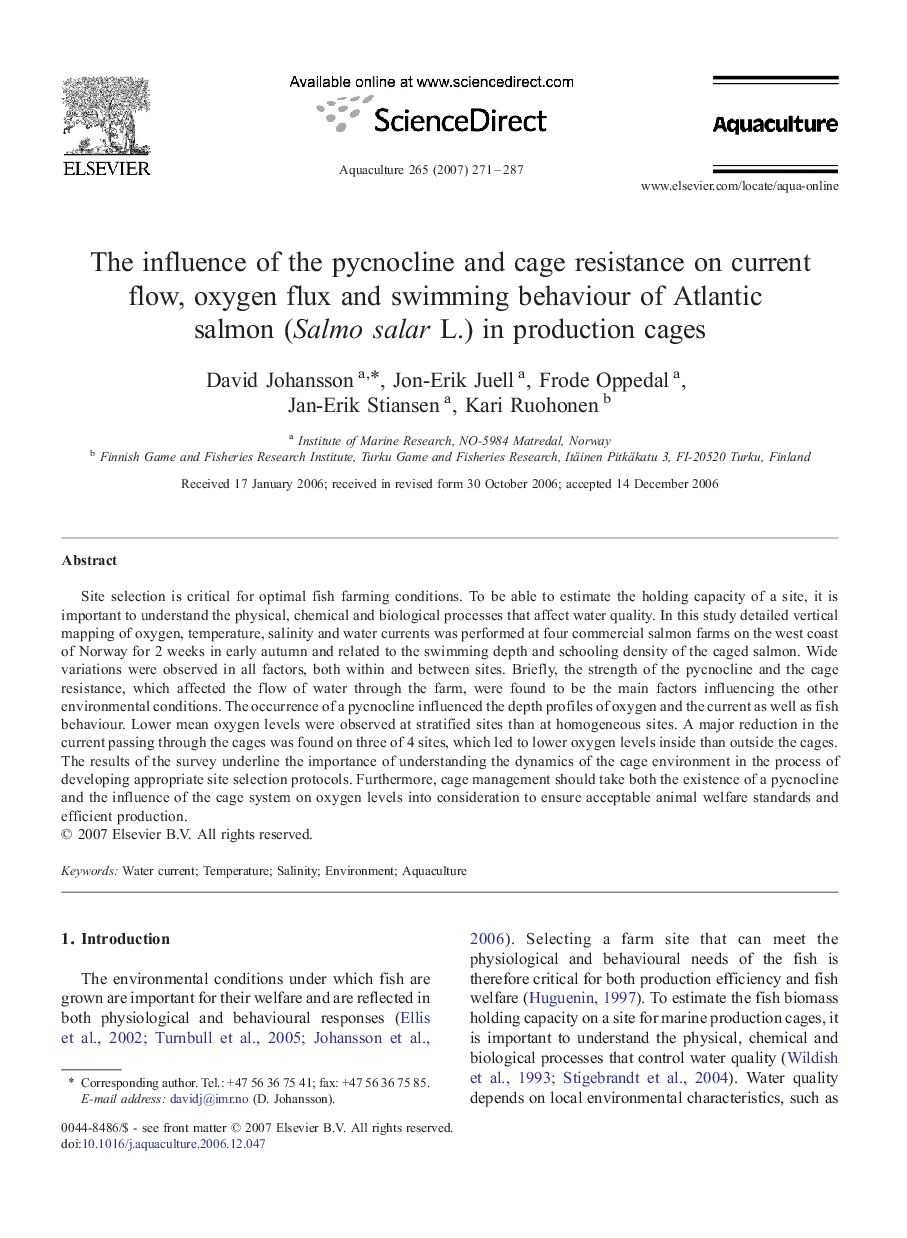| Article ID | Journal | Published Year | Pages | File Type |
|---|---|---|---|---|
| 2425633 | Aquaculture | 2007 | 17 Pages |
Site selection is critical for optimal fish farming conditions. To be able to estimate the holding capacity of a site, it is important to understand the physical, chemical and biological processes that affect water quality. In this study detailed vertical mapping of oxygen, temperature, salinity and water currents was performed at four commercial salmon farms on the west coast of Norway for 2 weeks in early autumn and related to the swimming depth and schooling density of the caged salmon. Wide variations were observed in all factors, both within and between sites. Briefly, the strength of the pycnocline and the cage resistance, which affected the flow of water through the farm, were found to be the main factors influencing the other environmental conditions. The occurrence of a pycnocline influenced the depth profiles of oxygen and the current as well as fish behaviour. Lower mean oxygen levels were observed at stratified sites than at homogeneous sites. A major reduction in the current passing through the cages was found on three of 4 sites, which led to lower oxygen levels inside than outside the cages. The results of the survey underline the importance of understanding the dynamics of the cage environment in the process of developing appropriate site selection protocols. Furthermore, cage management should take both the existence of a pycnocline and the influence of the cage system on oxygen levels into consideration to ensure acceptable animal welfare standards and efficient production.
